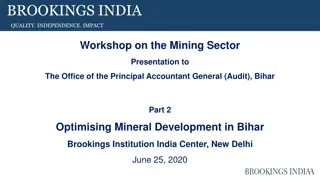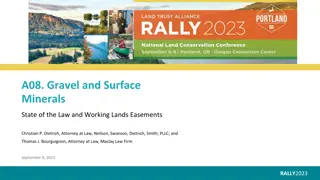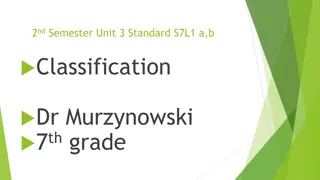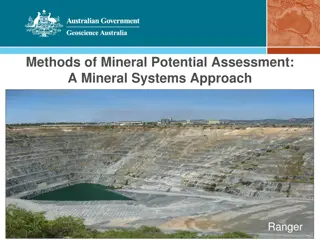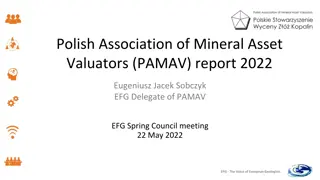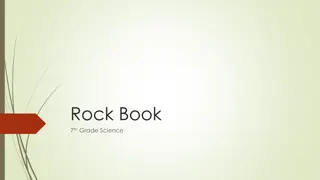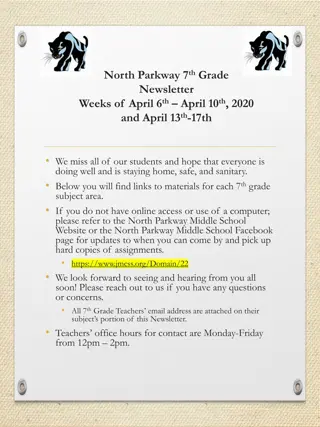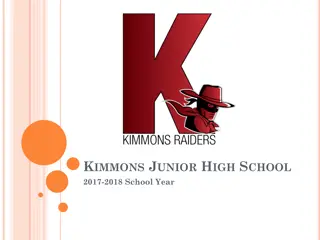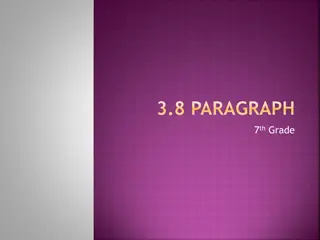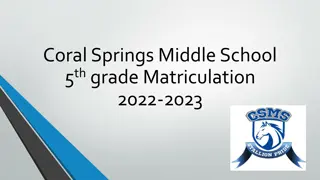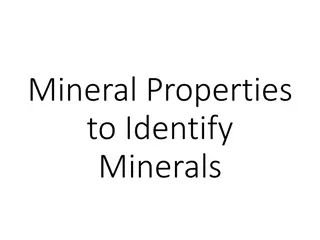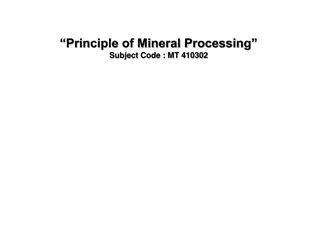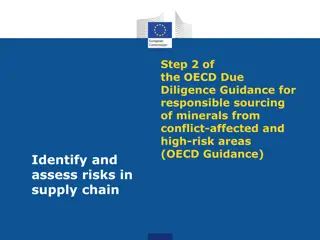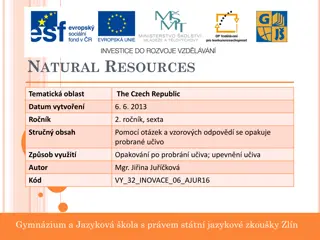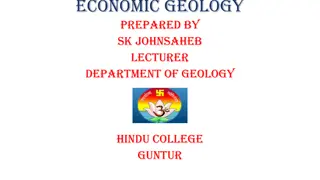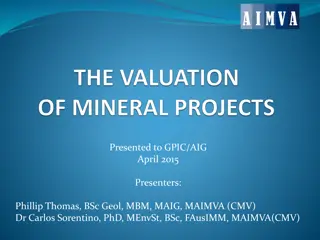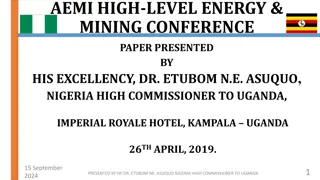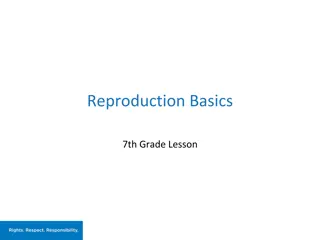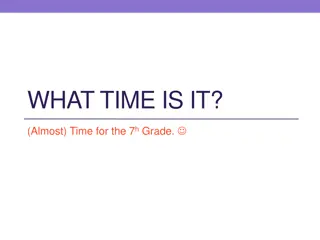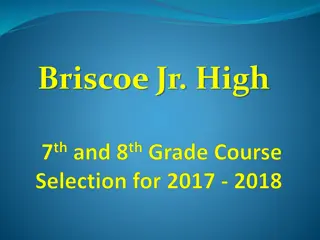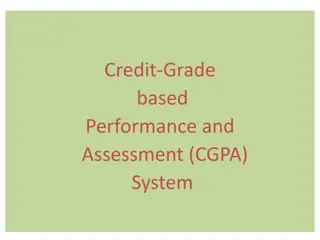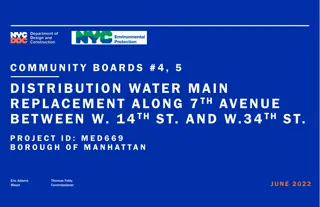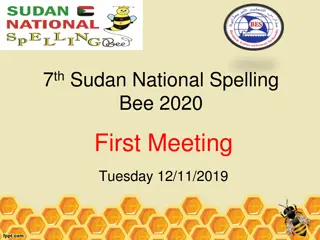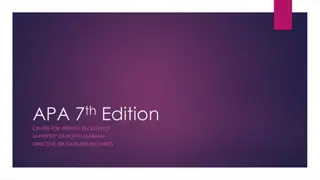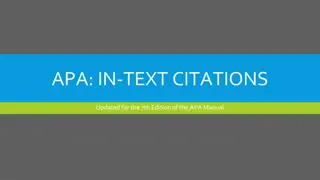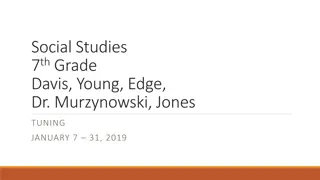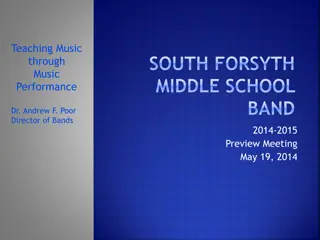Mineral Identification Challenge for 7th Grade Science Students
Engage in a Mineral Identification Challenge where 7th-grade students will explore various minerals using color, streak, luster, transparency, texture, composition, density, crystal shape, cleavage/fracture, hardness, and special properties. Students will rotate through different stations, perform tests, and collaborate with teammates to identify minerals. The challenge aims to enhance students' understanding of mineral characteristics and identification techniques. Utilize resources provided at each station and make the most of the learning experience.
Download Presentation

Please find below an Image/Link to download the presentation.
The content on the website is provided AS IS for your information and personal use only. It may not be sold, licensed, or shared on other websites without obtaining consent from the author. Download presentation by click this link. If you encounter any issues during the download, it is possible that the publisher has removed the file from their server.
E N D
Presentation Transcript
Mineral ID Challenge 7thGrade Science http://www.beachminerals.org/wp-content/uploads/2015/05/gem2.jpg T. Tomm 2015 http://sciencespot.net/
Mineral Identification Challenge Directions: (1) Your team will need to identify various minerals by visiting each of the stations and following the directions on the station cards. (2) Work with your teammates to complete each task/test and write the answers on your worksheet. (3) You will only have a set amount of time at each station and then will rotate to the next highest number (or back to #1 if you are at #6). Remember If you do not know the identity of a mineral ( ), you will have time at the end for another look at them or you might get clues to help you at other stations. However, you should complete all the tests/tasks! Let s review the mineral identification characteristics Put a star next to any test that has this icon an online video is available!
COLOR - The color a mineral appears to be; may vary from sample to sample STREAK The color of a mineral in a powder form; tested using a white plate LUSTER How a mineral reflects light, such as metallic, glassy, dull, pearly Mineral Identification Tests TRANSPARENCY/OPACITY Whether or not a mineral allows light to pass through it, may be transparent, semi-transparent, or opaque TEXTURE Description of what a mineral feels like, such as smooth, rough, grainy CHEMICAL COMPOSITION Classified based on the elements in they contain DENSITY Mass volume; use a scale and overflow can/graduated cylinder to measure mass & volume (Video available) CRYSTAL SHAPE Minerals have specific crystal shapes that can be used for identification. CLEAVAGE/FRACTURE Determined by how the mineral breaks apart; cleavage = smooth and evenly , fracture = rough and jagged (Video available) HARDNESS Use Mohs scale and common objects to figure out a mineral s hardness by the process of deduction. (Video available) SPECIAL PROPERTIES Does it create a double image from refraction? Glow in UV light? Fizz with acid? Is it magnetic?
Mineral Identification Challenge Glue the activity worksheet on page 59 (FAF Right side). Use your time at each station wisely so you can complete all the tasks/test. Do not damage the samples try to be as nice as you can so everyone will be able to use them. Clean/straighten up your area before you rotate. Use the resource books available at each station to help you. If you have extra time, you may check out the links in the Geology section of the Science Spot s Kid Zone. Remember If you do not know the identity of a mineral ( ), you will have time at the end for another look at them or you might get clues to help you at other stations. However, you should complete all the tests/tasks! If you see this icon, a video is available at sciencespot.net Kid Zone Rocks & Minerals
Station 1 Color vs. Streak Sample Color Streak What do you think it is? A Tan, white White Barite B Whitish-clear White Gypsum C Yellow, brown Yellow, gold Sulfur D Reddish brown Red brown Hematite E White, light tan No color Quartz F Gray, white White Calcite G Gray White Talc Greenish-gold gray H Black/green Pyrite
Station 2 Hardness Sample Observations Hardness What do you think it is? Not scratched by fingernail, scratched by penny Scratched by glass, but not the nail A 3 Calcite B ? 5.5-6 Sodalite C 7+ Hematite Scratches nail D 1 or 2 Sulfur Scratched by fingernail E 1 or 2 Graphite Scratched by fingernail F 7+ Chert Scratches nail G 1 or 2 Talc Scratched by fingernail H 1 or 2 Gypsum Scratched by fingernail
Station 3 Density Sample Mass Volume Density A 22 5 3.14 B 25 6 4.17 C 17 9 1.89 D 38 17 2.24 1. Galena has a high density. Which sample is most likely galena? 2B 2. Graphite has a low density. Which sample is most likely graphite? 2C
Station 4 Chemical Composition Examples Family/Group Chemical Description Quartz, Talc, Muscovite (also called mica) Azurite, Calcite Silicates Must contain silicon and oxygen Must contain carbon and oxygen Must contain fluorine, chlorine, iodine, or bromine Must contain sulfur and oxygen Carbonates Halite Halides Barite Sulfates Magnetite Oxides Contain a metal and oxygen Graphite, Copper Native Elements Made up of a single element ?
Station 5 Crystals, Cleavage, & Fracture Sample Cleavage/Fracture? Crystal Shape What do you think it is? Cubic or Rhombohedric A Calcite X Cleavage Fracture B Galana Cubic X Cleavage Fracture Cubes & other forms (too small to see) Cubic or Rhombohedric C Pyrite Cleavage X Fracture D Gypsum X Cleavage Fracture E Quartz Hexagonal Prism X Cleavage Fracture F Halite (Salt) Cubic X Cleavage Fracture G Mica (Muscovite) Monoclinic (sheets) X Cleavage Fracture
Station 6 Special Properties 1. Magnetite is magnetic, but may have a rough texture. Which sample is magnetite? 6A 2. Calcite will cause a double image due to refraction. Did you find any calcite in the group? No 3. Some minerals glow in UV light. Which samples had this property? 6F, 6K, 6E 4. Pyrite (Fool's Gold) has a metallic luster. Which sample is pyrite? 6H 5. Quartz has a glassy luster. Which sample is quartz? 6I 6. Mica has a pearly luster and a glassy texture. Which sample is mica? 6J
7. Opaque means light cannot pass through it, while others are transparent allowing light to travel through. Which samples were transparent? 6D, 6I, 6J 8. Did any minerals react with vinegar? If so, how would they be classified? Answers will vary


